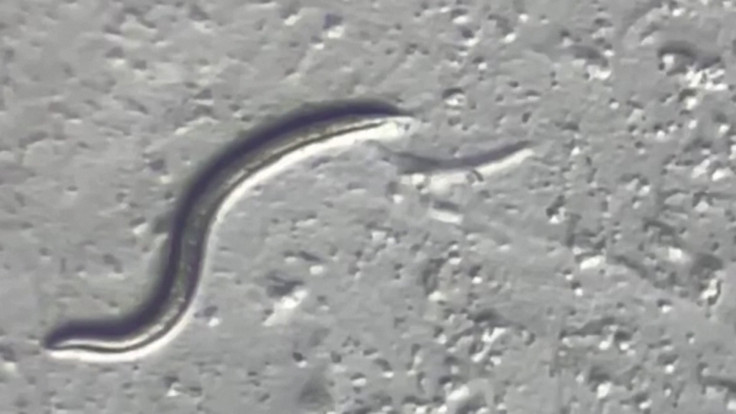World-first discovery as a worm is found inside a woman's brain in Australia
Marking an unprecedented case in medical history, a live "string-like" roundworm is discovered within a woman's frontal lobe during brain surgery.

In January 2021, a 64-year-old English woman from New South Wales came into an Australian hospital and complained of experiencing abdominal pain, diarrhoea, a dry cough and night sweats.
However, several months later, the poor woman's symptoms had gradually, and strangely, evolved into experiencing bouts of forgetfulness and depression, prompting medical experts to transfer her to Canberra Hospital, the largest district hospital in the region.
Determined to get to the bottom of what was causing these symptoms, medical experts conducted an MRI of the woman's brain. But whilst examining the scan, they noticed something rather odd.
More specifically, something that they had never seen before. A new discovery.
Almost immediately, they performed brain surgery on their patient in order to get a better look at the situation. Once they had sliced into the frontal lobe, their previous observation on the MRI scan had been confirmed – it's fair to say that they were flabbergasted.
From the woman's brain, neurosurgeon Dr Hari Priya Bandi reeled in complete shock and surprise when she extracted a live, eight-centimetre long, "string-like" roundworm.
"To my shock, there was a linear wiggling red line," Dr Bandi said. "We could see it was moving!"
Dr Bandi was in disbelief, adding: "I just thought: 'What is that? It doesn't make any sense. But it's alive and moving.'"
Due to the worm's distinctive appearance and location to which it was found, the specimen was rushed to the Commonwealth Scientific and Industrial Research Organisation (CSIRO) in Canberra where personnel claim it was "still rapidly moving", even after three days of extraction.
The specimen was sliced open for genetic typing, allowing experts to identify the parasitic worm as a third-stage larva of the Ophidascaris robertsi nematode species – also known as the roundworm.
It is typical for this type of worm to live in the digestive tracts of indigenous carpet pythons.
Now, I suppose you're probably asking the same question I did. Just how did this little worm end up in a human brain?
Considering that roundworms are typically found in snake faeces that are tainted with worm eggs, scientists believe that the woman accidentally ingested these eggs after consuming edible plants called warrigal greens, which grow adjacent to a lake inhabited by pythons.
After the eggs hatched inside of her body, it is believed that the larvae ventured towards the woman's brain, which could have been influenced by her compromised immune system and the medication she was taking.
Whilst the experts hypothesise that the woman unknowingly ate the eggs from the vegetation or her contaminated hands, the actual cause cannot be unquestionably confirmed.
Regardless, the researchers state that this case highlights the real danger of various diseases and infections being transmitted from animals to humans.
According to disease expert, Dr Sanjaya Senanayake from the Australian National University, this is the first neuroscience case to involve a worm being found in the brain of a mammalian species.
Dr Senanayake revealed that the patient had been immediately treated for traces of any other larvae that might have also invaded her body along with the roundworm.
Thankfully, the doctors said that the woman is making a solid recovery but is still being monitored for abnormal symptoms.
Commenting on this world-first discovery, Dr Senanayake stated: "It just shows as a human population burgeons, we move closer and encroach on animal habitats."
She concluded: "This is an issue we see again and again, whether it's Nipah virus that's gone from wild bats to domestic pigs and then into people, whether it's a coronavirus like SARS or MERS that has jumped from bats into possibly a secondary animal and then into humans."
© Copyright IBTimes 2025. All rights reserved.






















